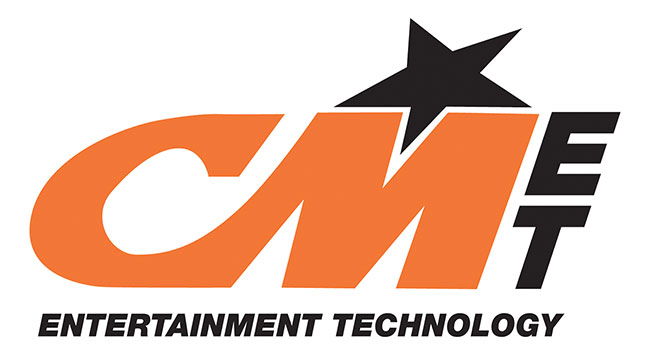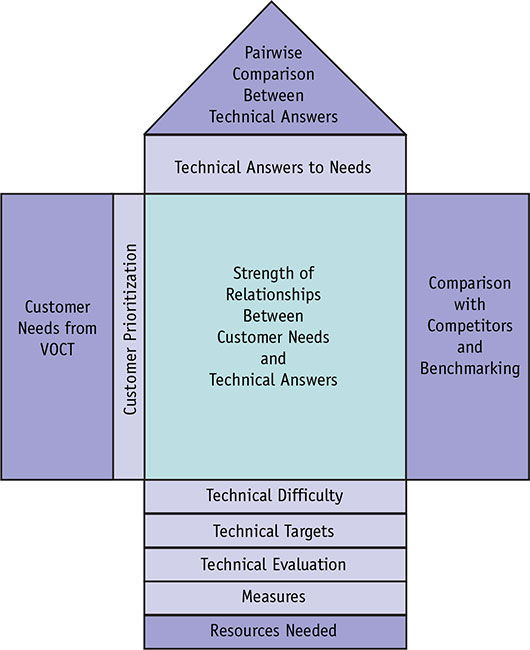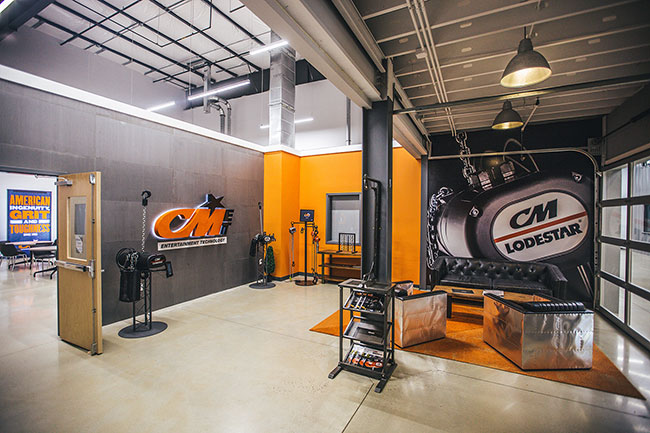Lifting up the entertainment industry
Editor's note: Cara Woodland is global voice of the customer manager at Columbus McKinnon Corporation, Getzville, N.Y.
 When was the last time you went to a concert and looked up to see what was holding up the speakers, stage set and other equipment? For most, it melts into the background of the experience and doesn’t stand out. However, you trust that you are safe and that something reliable is holding it all above your head.
When was the last time you went to a concert and looked up to see what was holding up the speakers, stage set and other equipment? For most, it melts into the background of the experience and doesn’t stand out. However, you trust that you are safe and that something reliable is holding it all above your head.
Leading up to your concert experience, there is a crew that spends countless hours rigging up the speakers, stage sets, lighting, trusses and equipment. The crux of their work is to get everything set up quickly and safely so the sound and lighting checks can take place before the show. How the crew does this is a production in itself. In short, everything is unloaded from trucks in specialized traveling road cases, wheeled into the venue, unpacked, laid out on the floor and attached to trusses on the ground. Then the magic happens and those trusses are lifted up into the air. In many cases, they are hung from a suspension point, like a rafter or ceiling lifting point or, if it is an open-air environment, the equipment is lifted to a pre-built truss. In the entertainment industry, powered hoists are typically used to lift all of the heavy equipment into the air. However decades ago, this process was much more cumbersome.
Columbus McKinnon, Getzville, N.Y., became a powerhouse in entertainment lifting over 40 years ago when it listened to its customers and developed a Lodestar hoist designed for inverted operation. The need came from observing riggers as they set up the stage sets. Often riggers had to climb up into the rafters of the entertainment space to install heavy hoists used to lift the trusses, speakers and lighting for a live event. For most industrial applications, a heavy hoist is not a concern, as the hoist is permanently installed and becomes a relatively stationary object above whatever it is lifting. However for the traveling entertainment rigger, who is installing and uninstalling dozens and, in some cases, hundreds of heavy hoists up in the rafters multiple times a week, it can be quite a tiring and trying job.
Seeing this need, Columbus McKinnon’s engineers asked why the heavy hoist had to attach to the rafters. Couldn’t the hoist be inverted and only the lifting hook and chain be brought up to the rafters? Then as the stage sets and trusses are put together on the ground, the heavy part of the hoist could be attached to it and lifted from the ground, saving time and the backs and arms of the riggers.
Not only was Columbus McKinnon the first to see this need but it also had a technical design advantage over others in the marketplace which stopped competitors from entering the market. Traditional hoists of the time used liquid oil. If the hoist was turned upside down, the oil would leak out, potentially dripping down on the entertainers below. However, Columbus McKinnon’s hoists used grease and allowed the hoist to be inverted without leaking. In addition, it was the first firm to paint the equipment black, which helped the hoists blend into the space around them and not distract from the event or performance.

Stay on top of the market
Over the years, the Lodestar hoist and Columbus McKinnon’s lifting equipment became the accepted name within the industry. However, Columbus McKinnon recognized the need to stay on top of the market to maintain its market leadership. Therefore, efforts have been taken to stay in touch with the needs of the entertainment customer.
More recently, a global voice of the customer study was undertaken to better understand current needs in the entertainment industry. The study involved interviewing and observing riggers in action while also talking to the industry influencers, distributors and leasing companies who rent hoists for traveling road shows. Riggers are often contractors traveling with a show so finding and gaining their cooperation to participate in market research is more difficult than recruiting your average participant. After some problem-solving, the team responsible for conducting the market research decided to use entertainment trade shows as a way to contact these unique segments.
Trade shows are usually attended by a broad international audience of the key target audiences. Entertainment trade shows tend to be flashy, requiring riggers to set up and tear down the booths. Conveniently, one of the targeted tradeshows was held in Las Vegas, known for its entertainment venues and a large hot spot for Columbus McKinnon hoist use. All of this combined allowed the company to access to its target audience in one location, so a team set out to attend the Live Design International trade show in Las Vegas and the Guangzhou Entertainment Technology Show in Guangzhou, China. These two trade shows would give Columbus McKinnon a large enough international audience to see if the needs of the Western and Eastern worlds were similar enough to produce a global entertainment hoist to meet the needs of both markets.
Columbus McKinnon had expo booths at both of these events where it could easily recruit research participants during the show. It decided to supplement this recruiting with pre-recruiting people it knew would be attending the event. A list of key people was developed and much time in recruiting and logistics was undertaken to have a minimum number of interviews set up prior to the shows. Then if the right type of person also came to the booth, they were also asked if they would be willing to participate in the research. This technique seemed to work well for finding this difficult-to-reach audience.

The observations and interviews netted a lot of food for thought on changes and improvements that could be made to the entertainment hoist. But the team needed a way to sort through all the data. The team decided to use a traditional quality function deployment or QFD process (Figure 1). This was an extensive process which required the research team to transcribe and review the transcripts for key quotes depicting end-users’ articulated or unarticulated needs. Then those observations and quotes were categorized and grouped into needs and scrubbed to create a prioritized list of customer requirements. Then the team translated those into a prioritized list of actionable and quantifiable technical requirements which correlated back to the most important customer needs. This technique can be a lengthy process but for engineers needing design specifications, it can be very fruitful if you are willing to invest the time.
Partner and innovate
One unique way Columbus McKinnon is able to interact with the entertainment industry outside of the trade show environment has been through Rock Lititz. Rock Lititz is a 30,000-foot space designed specifically to allow entertainers and their crews to practice, rehearse and test the setup and teardown of their stage sets until it is a seamless process. Those practicing in the space also have easy access to top-notch entertainment vendor resources throughout the Rock Lititz campus. On-campus “pods” are dedicated entertainment vendor storefronts with creative spaces dedicated to making it easy to partner and innovate together. The pods provide every type of vendor needed to produce a show, from the stage design and construction to specialized shipping and even musical instrument repair, health care and a gym.

Prominently within this area, Columbus McKinnon has its own dedicated space, which showcases its products in entertainment lifting and rigging. It also has a dedicated area for entertainment riggers to get rigging and hoist training from top-notch professionals in the industry. One of the benefits for Columbus McKinnon being a tenant on the Rock Lititz campus was not just the ability to showcase its products or provide training but being able to be face-to-face with those using its products, to interact with its customer and understand their needs. Those customers can be other Rock Lititz vendors building stage sets, riggers in Columbus McKinnon’s training classes or those practicing in the space. It gives Columbus McKinnon the unique opportunity to ask them what is working well, what challenges they have, what they wish for in the next product or even beta-test the next entertainment-lifting product.
The engineering team has used these unique touchpoints to help direct them as they continue to design the next-generation entertainment hoist and rigging components. Using the QFD requirements and learnings from Rock Lititz, they have begun adding features and functions to entertainment hoists. For example, the new Prostar VS provides significant benefits by enabling the hoist to move at infinitely varying speeds, allowing it to have micro-movements, smoother stops and starts and significantly reduces any jerking and swaying of the material being moved, which is much more important when stage sets are being changed during a live performance. This is just one instance of taking research insight into action; many other innovations like this are in various phases of the product development process.
Listening to its customers
As the entertainment field has evolved from performances into dynamic and theatrical productions, Columbus McKinnon has continued to be a market leader by listening to its customers through unique avenues. This allows the firm to meet the entertainer’s goal of providing an engaging show while keeping the behind-the-scenes functions flowing and safe. The next time you attend a concert, play or trade show, look up and see what is safely and seamlessly providing the support for such a production.
